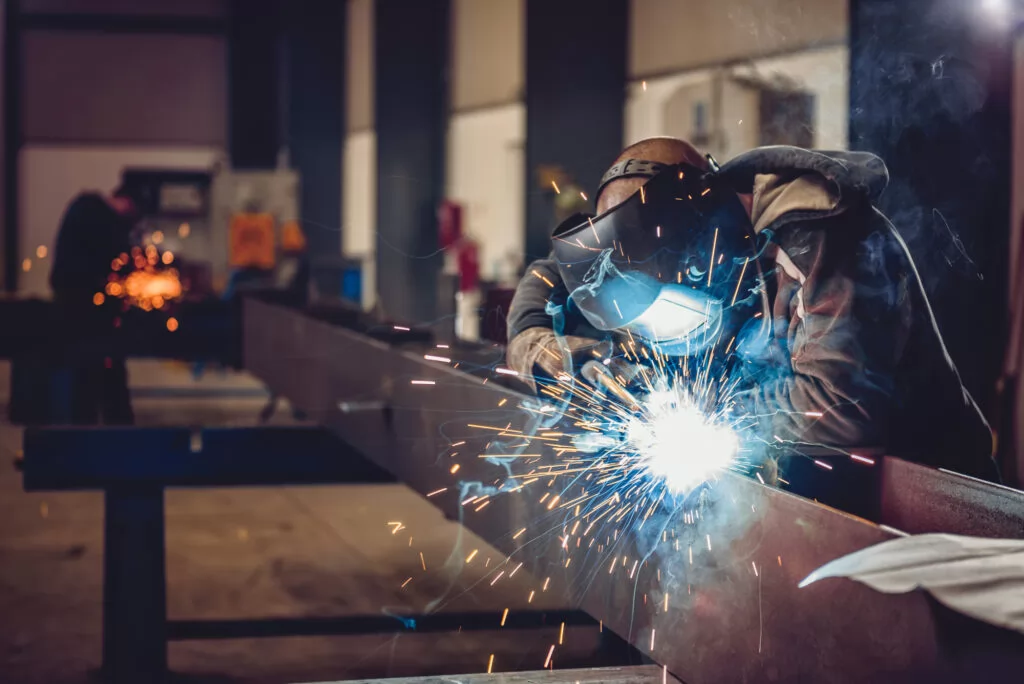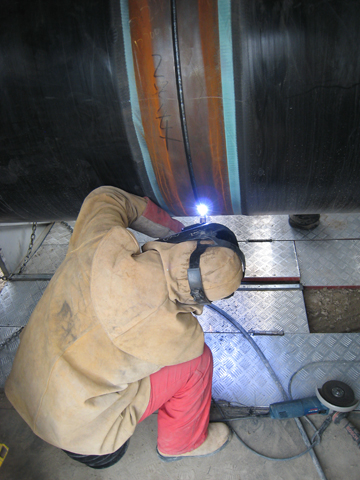All Regarding Welding: Key Insights Into Techniques and Ideal Practices for Success
Welding includes a selection of techniques, each fit for specific products and applications. Recognizing these approaches, such as GMAW, SMAW, and TIG, is necessary for attaining optimal outcomes. In addition, the best devices and security techniques can not be overlooked. As preparation and troubleshooting play important roles in the welding procedure, grasping these components can greatly boost the high quality of the end product. What are the crucial variables that ensure an effective weld?
Understanding Different Welding Strategies
Welding methods encompass a variety of methods, each matched to particular applications and materials. Amongst one of the most common strategies are Gas Steel Arc Welding (GMAW), Secured Steel Arc Welding (SMAW), and Tungsten Inert Gas Welding (TIG) GMAW, additionally recognized as MIG welding, is prominent for its rate and adaptability, making it optimal for slim materials. SMAW, or stick welding, is preferred for its simpleness and efficiency in exterior atmospheres, especially with thicker steels. TIG welding offers precision and control, making it appropriate for detailed work and non-ferrous metals (Montana Mobile Welding and Repair Belgrade). Each technique has its special benefits and factors to consider, permitting welders to select the most effective method based upon the project's requirements, product kind, and desired results. Comprehending these strategies is vital for effective welding
Important Welding Devices and Tools
While various welding strategies need particular skills, the right equipment and tools are just as important for attaining high quality results. Important welding devices includes welding makers, which vary depending upon the technique-- such as MIG, TIG, or stick welding. Protective gear, consisting of headgears, aprons, and gloves, assurances safety and security and convenience throughout the procedure. On top of that, clamps and components assist secure materials in position, ensuring accuracy in welds. Consumables like welding rods, cord, and securing gas are also critical components that influence the high quality of the weld. Tools such as mills and cutters facilitate surface preparation and post-weld ending up, adding to an expert result. Buying high-grade devices ultimately boosts the performance and performance of welding jobs.
Safety And Security Practices in Welding
Appropriate safety and security techniques are important in the welding sector to shield employees from potential dangers. Welders must wear proper personal protective equipment (PPE), including headgears with correct shading, gloves, and flame-resistant clothing. Sufficient air flow is essential to reduce direct exposure to dangerous fumes and gases generated throughout the welding process. In addition, employees need to be trained in the correct handling of welding devices to prevent crashes. Fire security steps, such as maintaining combustible materials away from the welding location and having fire extinguishers readily available, are needed. Routine examinations of devices and offices can assist identify possible threats prior to they result in accidents. By adhering to these safety and security methods, welders can produce a safer working atmosphere and reduce risks connected with their trade.
Readying Products for Welding
Preparing materials for welding is a crucial action that considerably influences the quality and integrity of the end product (Belgrade). Correct preparation involves cleansing the surface areas to remove contaminants such as oil, rust, and dust, which can jeopardize the weld. Methods such as grinding, sanding, or making use of solvents are generally employed to attain a clean surface. Furthermore, guaranteeing that the products fit with each other comfortably is necessary; spaces can lead to weak welds. It's also vital to take right into account the alignment and positioning of the components, as this will affect the ease of welding and the final outcome. Picking the appropriate filler product and making certain compatibility with the base metals is important for accomplishing strong, durable welds.
Tips for Achieving High-Quality Welds
Attaining top quality welds calls for attention to information and adherence to finest methods throughout the welding procedure. Appropriate joint prep work is crucial, making sure surface areas are clean and complimentary from contaminants. Picking the ideal filler material and welding method based upon the base metals is important for suitable bonding. Maintaining regular traveling speed and angle while welding can advertise and stop problems harmony. In addition, controlling warmth input is essential; too much warm can bring about warping and compromised joints. If required, routinely examining the welds during the procedure allows for prompt changes. Employing suitable post-weld treatments, such as cleaning and stress alleviation, can boost the toughness and integrity of the weld, eventually ensuring an effective end result.
Fixing Common Welding Issues
Welding usually provides difficulties that can influence the top quality and honesty of the final product. Usual issues such as porosity, irregular weld grains, and overheating can arise, each requiring certain repairing methods. Comprehending these problems is important for welders to enhance their abilities and accomplish ideal results.
Porosity Issues Explained
Porosity can often be neglected, it continues to be a vital problem in welding that can compromise the stability of a completed item. Porosity refers to the existence of small gas pockets within the weld grain, which can lead and deteriorate the joint to early failure. This trouble typically emerges from pollutants, wetness, or incorrect securing gas insurance coverage during the welding process. To mitigate porosity, welders ought to verify that the base materials are tidy and dry, use suitable securing gases, and keep consistent welding criteria. Routinely evaluating the equipment and environment can likewise assist identify prospective concerns prior to they show up in a knockout post the weld. Attending to porosity efficiently is necessary for attaining solid, long lasting welds that fulfill quality standards.

Inconsistent Weld Beads
Inconsistent weld grains can significantly influence the quality and toughness of an ended up product. Numerous aspects add to this concern, including inappropriate travel speed, incorrect amperage settings, and inconsistent electrode angles. When the welder moves as well rapidly, a grain may appear slim and lack infiltration, while moving as well slowly can cause too much build-up. Furthermore, utilizing the wrong amperage can result in either undercutting or extreme spatter, both of which concession weld honesty. The welder's method, such as irregular torch motion, can also cause uneven grain appearance. To minimize these troubles, welders ought to focus on maintaining constant, controlled movements and making sure proper devices setups to accomplish harmony in their welds. Uniformity is vital to accomplishing reliable and strong welds.
Overheating and Warping Issues
Excessive warm during the welding process can bring about substantial getting too hot and deforming issues, influencing the architectural stability of the work surface. These problems frequently materialize as distortion, which can endanger positioning and fit-up, making further setting up challenging. Elements adding to overheating include the choice of welding parameters, such as voltage and travel speed, in addition to the sort of product being bonded. To alleviate these concerns, welders should preserve consistent traveling rate and proper warm input while checking the workpiece temperature level. Furthermore, pre-heating or post-weld warm therapy can assist alleviate anxieties brought on by fast cooling - Montana Mobile Welding and Repair Belgrade. Routine assessment and adherence to best practices are vital in avoiding overheating and making certain the long life and reliability of bonded frameworks
Often Asked Inquiries
What Are the Job Opportunities in the Welding Sector?
The welding sector uses diverse job chances, including placements as welders, educators, assessors, solvent welding and designers. Experts can operate in manufacturing, construction, aerospace, and auto markets, profiting from strong demand and affordable incomes in numerous roles.
How Can I Improve My Welding Rate Without Sacrificing Top Quality?
To boost welding speed without giving up top quality, one should exercise efficient techniques, preserve devices, enhance setups, and improve hand-eye sychronisation. Normal training and seeking comments can likewise greatly add to achieving faster, high-quality welds.
What Accreditations Are Offered for Welders?
Many accreditations exist for welders, consisting of those from the American Welding Culture (AWS), the National Center for Construction Education and Research Study (NCCER), and numerous industry-specific companies. These qualifications enhance employability and demonstrate skill proficiency.
Just How Does Welding Affect the Characteristics of Metals?
Welding influences the residential or commercial properties of steels by modifying their microstructure, which can cause adjustments in firmness, strength, and ductility. Heat input and cooling prices during the process substantially affect these material attributes.
Can I Bonded Dissimilar Metals With Each Other?
